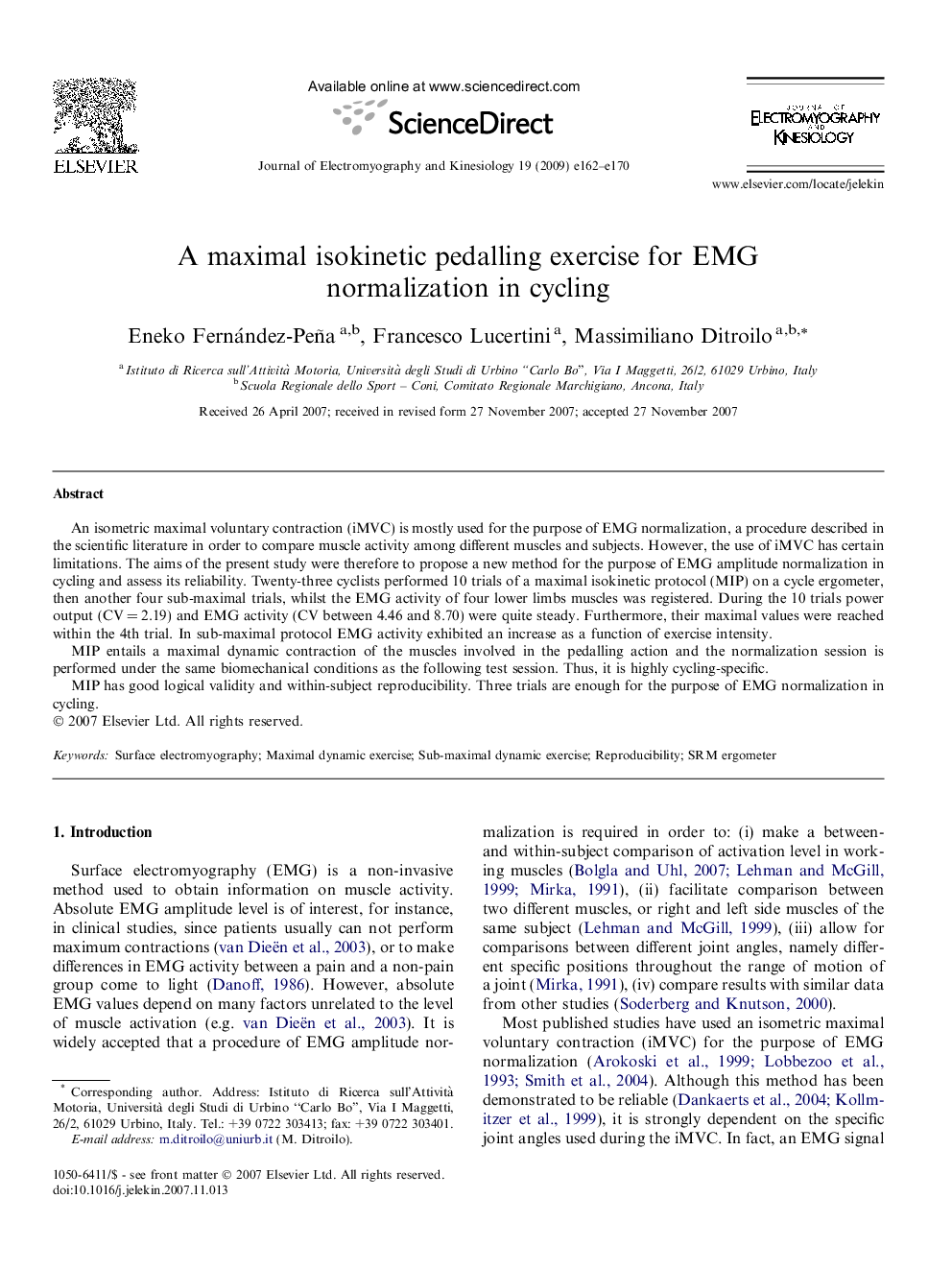| Article ID | Journal | Published Year | Pages | File Type |
|---|---|---|---|---|
| 4065355 | Journal of Electromyography and Kinesiology | 2009 | 9 Pages |
An isometric maximal voluntary contraction (iMVC) is mostly used for the purpose of EMG normalization, a procedure described in the scientific literature in order to compare muscle activity among different muscles and subjects. However, the use of iMVC has certain limitations. The aims of the present study were therefore to propose a new method for the purpose of EMG amplitude normalization in cycling and assess its reliability. Twenty-three cyclists performed 10 trials of a maximal isokinetic protocol (MIP) on a cycle ergometer, then another four sub-maximal trials, whilst the EMG activity of four lower limbs muscles was registered. During the 10 trials power output (CV = 2.19) and EMG activity (CV between 4.46 and 8.70) were quite steady. Furthermore, their maximal values were reached within the 4th trial. In sub-maximal protocol EMG activity exhibited an increase as a function of exercise intensity.MIP entails a maximal dynamic contraction of the muscles involved in the pedalling action and the normalization session is performed under the same biomechanical conditions as the following test session. Thus, it is highly cycling-specific.MIP has good logical validity and within-subject reproducibility. Three trials are enough for the purpose of EMG normalization in cycling.
